- TODAY
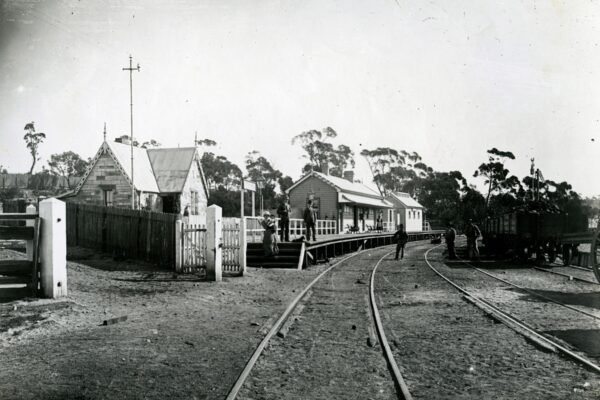
Construction of a railway across the Blue Mountains began in the 1860's with Katoomba Railway opening in 1874. Known as ‘The Crushers’, a reference to the quarry which provided ballast for the railway, the railway allowed travel to the upper Mountains with ease and comfort.
However, upon arrival the question was ‘where to stay’? Although ‘The Crushers’ was not initially a passenger terminal, it paved the way for development in the surrounding area.
The name ‘The Crushers’ was changed to Katoomba in 1877.
1860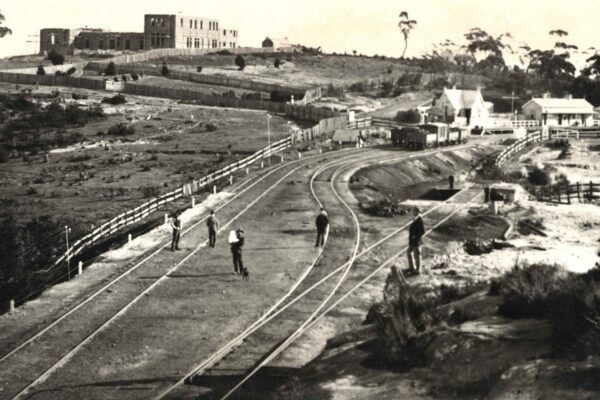 Construction commences on The Carrington Hotel.
Construction commences on The Carrington Hotel.By the early 1880's demand for 'where to stay' resulted in numerous hotels in the upper Mountains.
In August 1881, The Carrington Hotel would begin to answer this question as well. For in that month, architect John Kirkpatrick advertised in the Sydney Morning Herald for tenders to construct a large hotel in Katoomba, to be built atop the hill just south of Katoomba Railway Station.
Construction commenced in late 1881, with a builder from Lithgow called Francis Drewett employed to realise it.
In 1882, Sydney hotelier Harry Rowell purchased the site, aiming to open his 'Great Western Hotel' by December. However, construction took longer than anticipated; after obtaining a liquor licence in July 1883, he opened the following month.
1881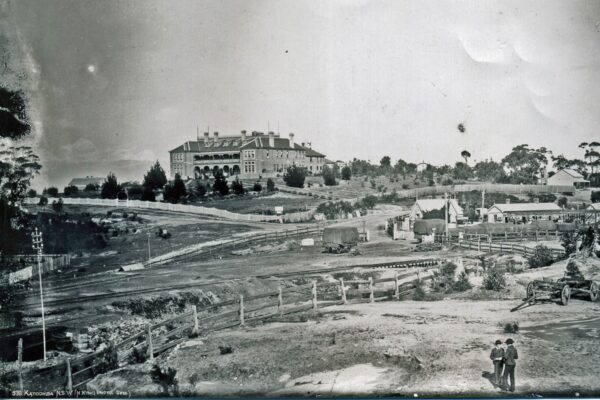
The history of guests at what is now The Carrington Hotel officially begins with the opening of The Great Western Hotel on 15th August 1883.
It was described as having ‘accommodation for seventy to eighty persons, contains nearly sixty rooms consisting of a large drawing room, a general ladies’ drawing room, a gentleman’s smoking room and reading room; the intermediate space is divided into suites of private sitting and bedrooms’.
1883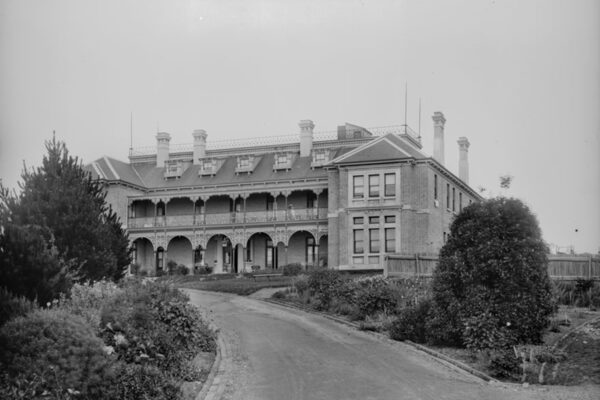
Following Rowell's death in August 1885, his wife continued to manage the Hotel. Around this time, a hotel guest Frederick Charles Goyder offered to purchase the property and Mrs Rowell accepted.
Whilst not yet the lessee, Frederick Goyder saw an opportunity in late November 1885 to rename the property 'The Carrington Hotel' - in honour of the new Governor of New South Wales, His Excellency Lord Charles Robert Carrington.
During his tenure as Governor, Lord Carrington stayed at the Hotel twice, in May 1887, and again in September 1887. During the September visit, Lord and Lady Carrington were also escorted along the Six Foot Track to the Jenolan Caves.
The Carrington Hotel quickly became successful in attracting the elite of Sydney to the Blue Mountains. By the early 1900s the Hotel secured a reputation as the premier tourist resort in the Southern Hemisphere. Newspapers often cited her as the only rival to the Raffles Hotel in Singapore.
Goyder was responsible for many garden plantings, with shrubberies and pines. He and hotel manager A. Peacock were cited as instrumental in introducing a water supply and sewerage system to Katoomba.
Goyder is also credited with the creation of the Grand Dining Room and upgraded facilities including the introduction of Katoomba’s first telephone. The Carrington’s number was Katoomba 1 which is reflected in the Hotel’s telephone number today: 02 4782 1111.
1886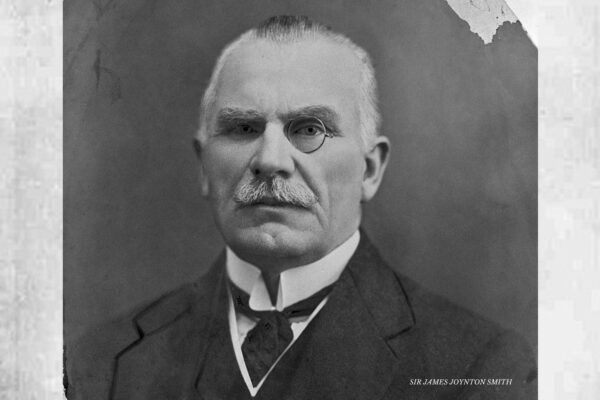
Flamboyant entrepreneur Sir James Joynton Smith arrived in Sydney in 1890, serving as the city's Lord Mayor from 1915 to 1918.
He acquired several hotels including the Imperial Arcade Hotel, Pitt Street (later renamed The Arcadia); the Hotel Imperial, Mount Victoria; the Log Cabin, Penrith; and notably The Carrington Hotel in Katoomba.
Joynton Smith is acknowledged for realising The Carrington Hotel’s most significant alterations, many of which have been restored and listed for future conservation.
1911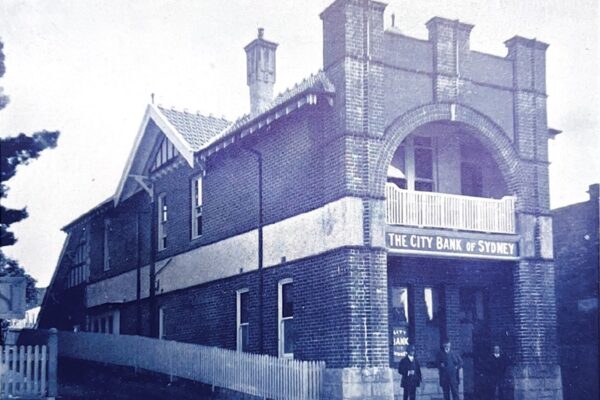
Joynton Smith determined a bank was required on the premises of The Carrington Hotel for his elite clientele.
Designed by architect Edward Hewlett Hogben in partnership with Harry Goyder, the construction of a two-story building commenced in 1911, and in June 1912 The City Bank of Sydney, Katoomba Branch opened.
‘On Friday last the contract was let for a two-storied building embracing banking chambers and manager’s quarters for the [City Bank of Sydney]. The new building is to occupy a very fine position on the vacant allotment next the main entrance to the Carrington Hotel in Katoomba Street and will be built of stone and O.K. brickwork.’ (Source: TROVE, The Blue Mountain Echo, Dec 1911, page 5.)
1912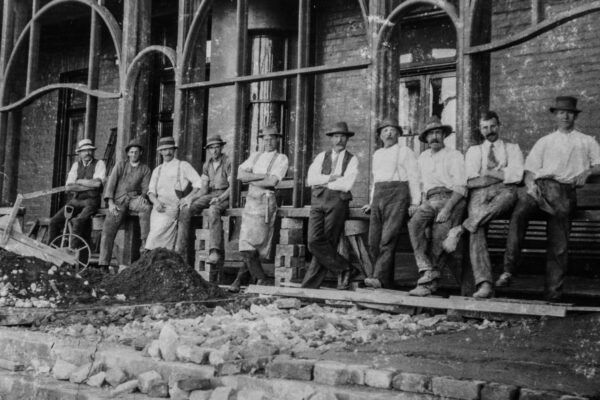
1913 was significant for The Carrington with the construction of many iconic features admired today.
Joynton Smith again commissioned prominent local architect Edward Hewlett Hogben, in conjunction with Harry Goyder, to remodel the original iron-laced frontage (designed by Kirkpatrick). Works comprised the addition of the renowned stained-glass façade; Art Nouveau verandah with tiled columns; Italianate balustrades and curved stairs built by Howie, Brown and Moffat.
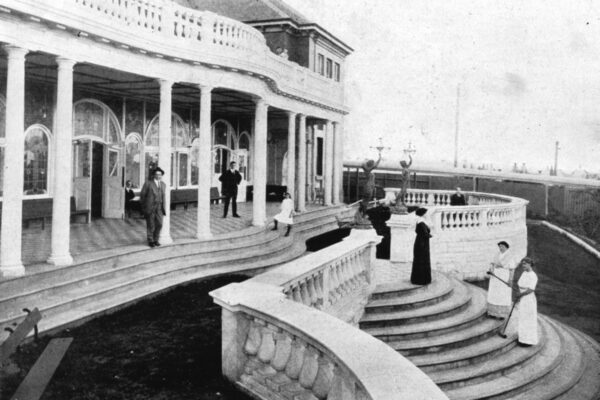
Joynton Smith continued to enhance the property, introducing numerous works of art including two Ming vases shipped from China and delivered to Katoomba by rail. During transit, one vase was dropped and damaged. The brass staples used to repair it are evident on the vases which remain intact and displayed in the Colonnade of the Grand Dining Room today.
1913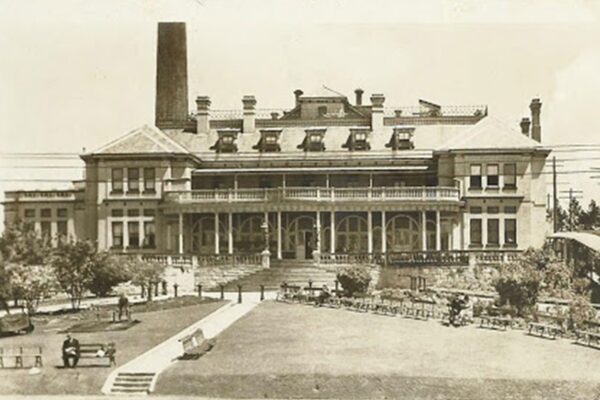
In keeping with his grand vision, Joynton Smith built his own electric power station (designed by Edward Hogben; built by Howie, Brown and Moffat). Located on the Parke Street boundary of The Carrington, it would become the principal landmark of Katoomba.
Joynton Smith installed his own generating plant retained from the Imperial Arcade, Sydney. He had been forced to sell the enterprise to Sydney City Council and agree to not generate power anywhere in the Sydney City area.
Katoomba Power Station provided electricity west to Mt Victoria and east to Wentworth Falls until operation ceased in 1925.
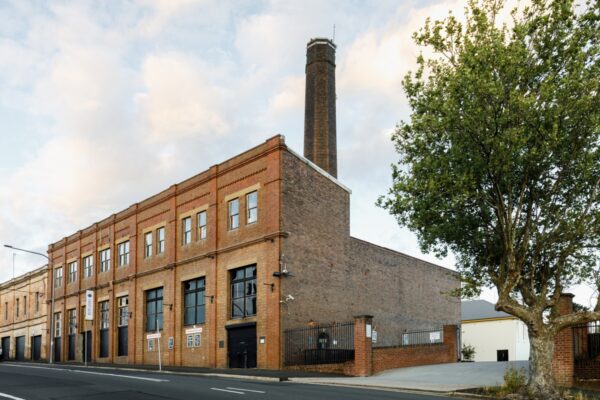
Today, the adaptive reuse of the building houses the Carrington Cellars & Deli and Katoomba Brewing Co. Its chimney remains as Katoomba’s most iconic structure.
1913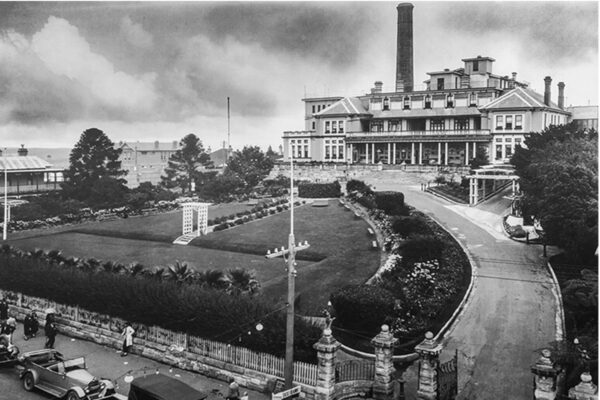
Joynton Smith substantially increased the Hotel's guest accommodation during this period. Dormer windows were removed, transforming smaller attic bedrooms (originally for servants) into suitable guest rooms. The west end of Rowell’s north wing was demolished, replaced with an entirely new wing.
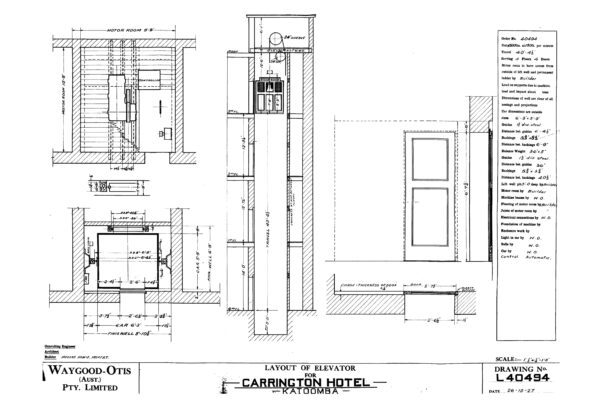
The Otis elavator still in use today was installed in 1927, and the Grand Dining Room was enlarged in anticipation of the Royal Visit.
1923–27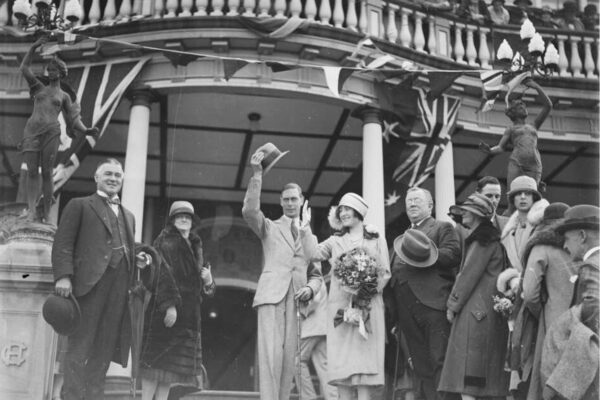 The then Duke and Duchess of York (later King George VI and the late Queen Mother) set sail from Great Britain to Australia with purpose of opening the new Parliament House in Canberra.
The then Duke and Duchess of York (later King George VI and the late Queen Mother) set sail from Great Britain to Australia with purpose of opening the new Parliament House in Canberra.
Their tour included the Blue Mountains, staying overnight at Jenolan Caves House. During this visit, the Duke and Duchess would briefly stop at The Carrington Hotel for lunch.
In anticipation of their visit, the stained-glass cupola and minstrel gallery were added to the Hotel.
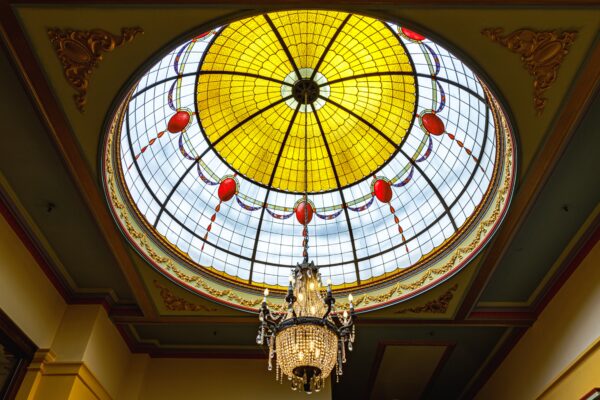
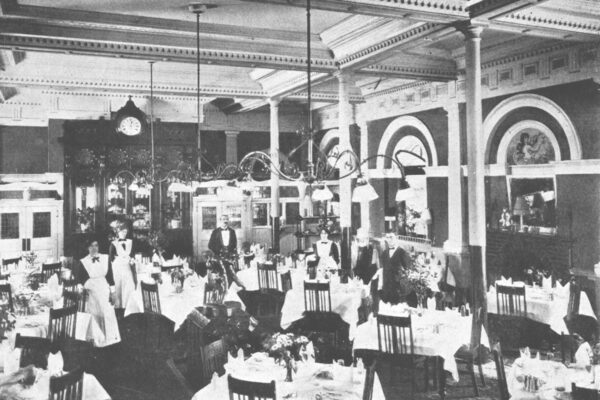 The Carrington Hotel enjoyed immense popularity and prosperity during this period as the honeymoon destination of choice, in addition to attracting famous guests, British royalty, Australian prime ministers, actors and film stars.
The Carrington Hotel enjoyed immense popularity and prosperity during this period as the honeymoon destination of choice, in addition to attracting famous guests, British royalty, Australian prime ministers, actors and film stars.
Following Joynton Smith's death in 1943, management of the Carrington Hotel fell under the direction of the Joynton Smith Management Trust.
Three significant employees from this era include kitchen hand Jacky Brooks, bookkeeper Miss McGrail, and gardener Samuel Timmings. The names of all three can be seen today engraved in the stone paths of Carrington Place at the front of the Hotel.
1930–40s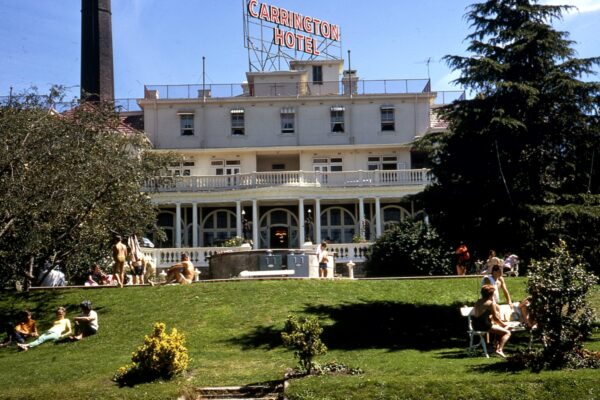 Despite a decline in Mountain tourism, The Carrington's popularity continued during the 1950s and 60s. 1968 saw the property acquired by a consortium of six, including property developer Theodore Constantine Morris. The entire property would subsequently be transferred to Morris on 5th May 1969.
Despite a decline in Mountain tourism, The Carrington's popularity continued during the 1950s and 60s. 1968 saw the property acquired by a consortium of six, including property developer Theodore Constantine Morris. The entire property would subsequently be transferred to Morris on 5th May 1969.
Morris commenced construction of a resort-style swimming pool on the upper terrace which opened in late 1969.

By mid-1970, The Carrington required extensive upgrades and heritage restoration. In 1978, it was placed on the register of the National Trust and despite a successful, albeit premature centenary celebration in 1980, the Hotel did not receive the necessary maintenance.
An interim conservation order was placed on the buildings and most of the historic curtilage in 1982 by the New South Wales Government. It was listed by the Australian Heritage Commission in 1985, as a building of both state and national significance.
Despite these acknowledgements, later that same year the Licencing Court of NSW ordered the closure of The Carrington Hotel due to breaches of Fire Ordinances. It would remain empty, boarded up until its sale in late 1991.
1970–91Acquired by building contractor Geoffrey Leach and two partners in February 1992, The Carrington Hotel would undergo a period of extensive restoration and reopening.
One of the first restoration projects was the Katoomba Street Bar – known today as The Old City Bank Bar & Brasserie. Works continued within the Hotel proper: the art nouveau stained glass windows of the enclosed veranda were replicated, and the black and white tiled bathrooms (many with original fittings) restored.
By 1998, the ground floor of the Hotel and the first-floor accommodation was open with other hotel spaces and public bars opening thereafter.
1992–98In 2004, The Carrington Hotel was acquired by a private consortium of Australian businessmen who shared keen interest in the heritage and historical significance of the hotel. Some now reside in the Blue Mountains and are hands-on in daily operations.
In recent years, The Carrington has been sensitively resorted to its former grandeur, capturing the elegance, charm, and ambience of yesteryear. Kirkpatrick’s Italianate design remains the hero, undiluted by contemporary improvements.
Described as a ‘labour of love’ this magnificent property offers 65 spacious rooms and suites. Manicured gardens designed by the renowned Paul Sorensen feature the original Bunya and Monterey Pines as planted in the early 1900s.
The premier Cocktail Bar and Lounge are open to the public, featuring recent carpeting replicated to match the original floor coverings.
The restored Grand Dining Room is replete with original features such as reeded glass chandeliers. A significant Victorian Buffet contains silver serving utensils monogrammed by various hotel owners dating back to the early 1900s. Updated with modern amenities, the Grand Dining Room remains one of the few Victorian Dining Rooms still operating to this day.
2004–2009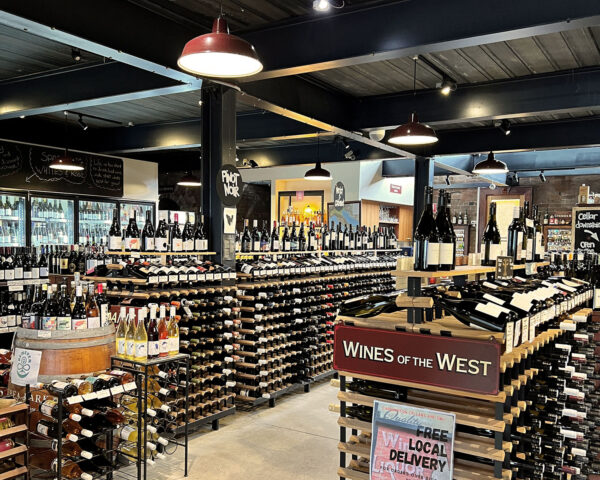 The building which once housed the Katoomba Power Station is unveiled as Carrington Cellars & Deli, retaining several aspects of the heritage building’s architecture.
The building which once housed the Katoomba Power Station is unveiled as Carrington Cellars & Deli, retaining several aspects of the heritage building’s architecture.
The fine liquor and gourmet food providore is reminiscent of the original Dan Murphy’s in Chapel Street, Melbourne with aisles of open racks, wine tastings and opportunities to meet winemakers.
2010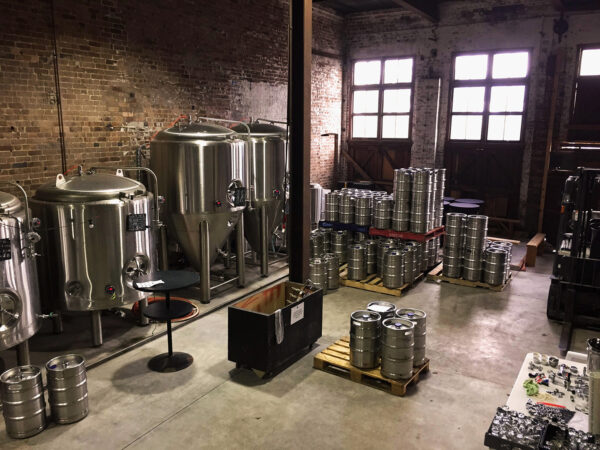
Katoomba Brewing Co. was established in the former Katoomba Power Station. Now in full production, the brewery services both of The Carrington's onsite bars and produces packaged beer available for purchase in the Carrington Cellars & Deli.
2015
Liquor Licence No. LIQH400118821.
The Carrington practices responsible service of alcohol. Alcohol is not sold or supplied to anyone under 18 years of age – it is against the law.